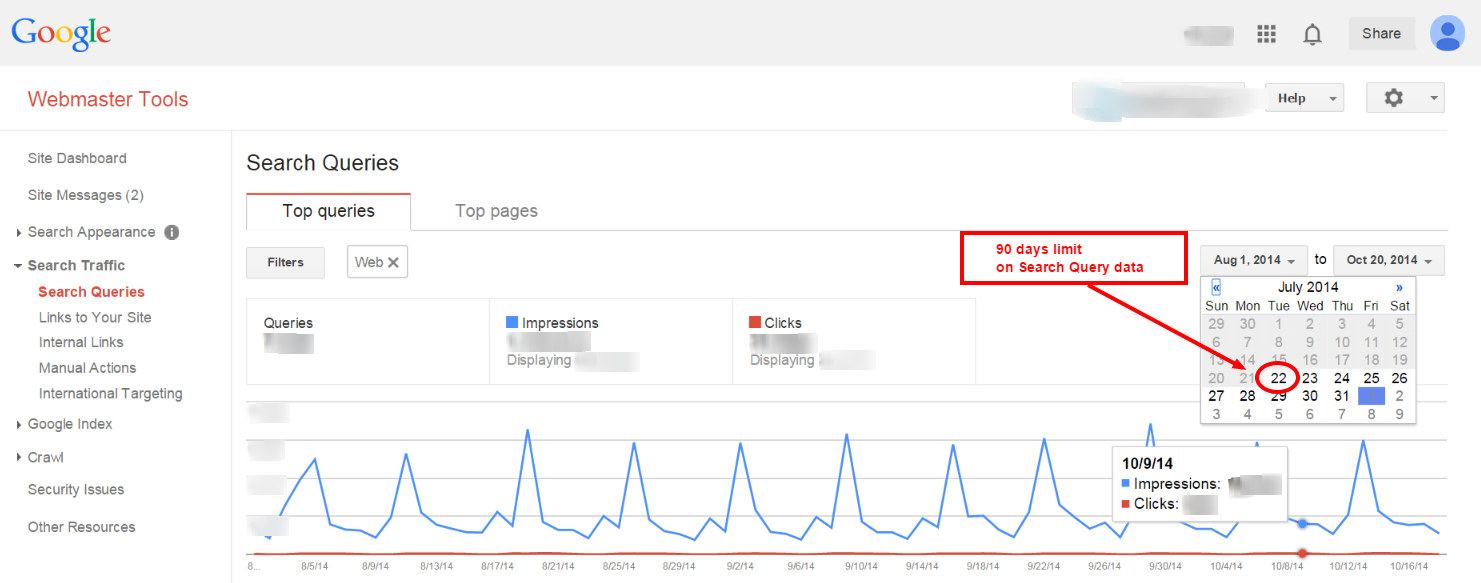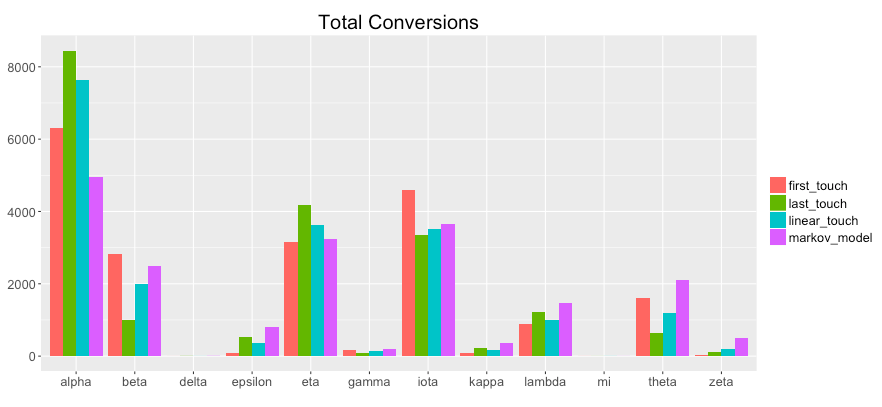We’ve logged almost two decades in the 21st century already. So I’ll ask the question that’s on everyone’s minds --
Shouldn’t multi-touch attribution be easy by now?
You’d think so. But you’d be wrong.
If you’re struggling to incorporate multi-touch attribution into your marketing analytics strategy, you’re not alone. Technological and financial limitations make efficient and accurate multi-touch complicated for the average business.
This post will guide you through what makes multi-touch attribution so difficult and how to excel at it.
Let’s get going!
Get brand new analytics strategies straight to your inbox every week. 23,739 people already are!
Why Multi-Touch Attribution Is So Complicated
As the name implies, multi-touch attribution tracks and assigns value to multiple parts of your digital marketing campaigns.
Now, the more complex a campaign is, the more comprehensive the data set you want to analyze will be. And the more complicated your attribution calculations will become.
Multi-touch attribution requires considering and tracking a lot more information than you do with single-touch attribution. And things can get so muddy so, so fast.

For the most part, multi-touch attribution’s complexity can be divided into three major categories:
- Google Analytics and its limitations
- Segmentation of marketing data
- How expensive certain attribution tools are
These three challenges are the primary source of your attribution headaches. So, it follows that solving these problems will help clear those headaches right up.
1) Google Analytics Can Only Do So Much
Google Analytics may be the ubiquitous marketing analytics platform, but it has at least three limitations when it comes to multi-touch attribution.
For one, Google Analytics’ default attribution models offer limited multi-touch views. Most notably, these include first touch, last touch, and a handful of others. Also, setting up your own custom models outside of these presets is far from easy.
Secondly, Google Analytics only lets you compare data from 90 days prior to conversion, making it obsolete for longer sales cycles, ongoing comparisons, or historical comparisons.

And most importantly, Google Analytics’ terms and conditions prohibit the use of personally identifiable information (PII) in your conversion events.
This means that even if you are able to cobble together a multi-touch report in GA, you will have to go to great lengths to view individual lead journeys in a GA report (but more on this later).
2) Marketing Data Is All Over The Place
Marketers store data across multiple platforms. You might keep form submissions in Unbounce, call tracking and call recording data in CallRail, web session data in Google Analytics, and so on. It’s difficult to draw useful insights when your data is so fragmented.
Sure, you can tie many data sources back into Google Analytics. But the tool’s restriction on PII gets in the way of viewing the holistic, attributed lead journey. As a result, it's harder to connect your marketing efforts to real-life sales and customers.
For large businesses with hefty budgets, marketing automation tools like Marketo or HubSpot can help fill parts of this data gap.
But these tools lack native tracking for some of the most important conversion events, like phone calls and live chats. Further, they’re often out of reach for smaller businesses who could benefit from them.
3) Multi-Touch Tools Are Expensive And Exclusive
Purchasing and implementing the right multi-touch tools is challenging and expensive. A company can expect to spend $1,500-$2,000 a month for full visitor-level lead tracking. While an enterprise company can surely shell out that much cash, smaller businesses are left out.

Additionally, most multi-touch attribution tools require integrations with select CRMs like Salesforce that not all businesses use. Small businesses in particular may not be using CRM software at all.
3 Concepts For Mastering Multi-Touch Attribution
Despite these limitations, you can still succeed at multi-touch attribution with the right strategy and a little elbow grease.
Below are the three main concepts you need to understand to nail multi-touch attribution.
1) Solve For Identity
Using your touchpoint data to determine a lead’s identity can be challenging, but it’s absolutely critical if you want to succeed at multi-touch attribution. Identity is the narrative glue that joins all of a lead’s touchpoints, so don’t shy away from the challenge!
I mentioned earlier that Google Analytics makes it difficult to connect your marketing data to actual customers.
Luckily, you can work around this with cookies.
By setting up and passing unique identifiers stored in cookies, you can track a user’s behavior before they convert. Then you can connect that activity to a real person once they’ve given you their information (e.g. email via form submission, phone number via inbound call, etc.).
Solving For Identity In Four Steps
1) Determine which unique personal identifier you will use for identity resolution, or build custom JavaScript to set a cookie value with your own unique personal identifier.
Make sure you use the same identifier across your entire website so you can associate it with web session data and lead capture events.
As far as tools are concerned, it doesn’t really matter which one you use. Make sure, however, that you can easily export the other session data you’ll need for channel/content analysis. (More on this in the “Capture the right data” section.)
2) Set up your forms with a hidden field to pass the unique personal identifier (e.g. Google Analytics client id) when the user submits a form, initiates a live chat conversation, or makes a phone call.
Many call tracking tools call this feature custom cookie capture. It associates any unique cookie values configured to be captured with the tracked phone call.
3) Determine where you will store and how you will unify each unique personal identifier with its respective session data upon a lead capture event.
You can use a spreadsheet, a marketing automation platform, or even a CRM to store this data.
4) Choose a more meaningful (and durable) unique identifier for down-funnel interactions and analysis.
I recommend using a lead’s email address as your main post-lead-capture identifier. It’s much easier to tie down-funnel interactions and purchases to an email address than a long alphanumeric string that means nothing to anyone.
Creating An Identity Key
If you nail these four steps, then you’ll end up with a list of email addresses and their corresponding unique personal identifiers. This list will serve as your identity key for attribution analysis in other platforms (or for appending other data in a spreadsheet).
You’ll basically be set with a who’s-who list of what emails and conversions came from which buyers/lead journeys on your site.

2) Capture The Right Data
In addition to a personal identifier, you need to ensure your analytics tool is capturing a minimum of three data points for each touchpoint. These are usually DateTime (date and timestamp), referring URL, and landing page URL.
- Date and timestamp are pretty self-explanatory. Knowing when the interaction happened lets you get a better sense of user paths and opens up different attribution models for analysis.
- Full referring URLs give you a clear sense of which sources generate traffic on a more granular level than just the referral domain or channel source, as determined by your analytics tool.
- Full landing page URLs tell you where the user entered your site and allow you to extract more information from parameters like UTMs.
Together, these three data points give you enough information to assess when, where, and how the touchpoint happened.
If you want to take your analytics to the next level, I also recommend that you track form page URLs and pages visited prior to a form page URL. This is helpful for advanced content analysis that requires conversion path information and content attribution.
Assuming you’ve solved for identity and are capturing the necessary touchpoint data, you can start building attribution models to analyze that data. You can use single-touch models like first-touch and last-touch, as well as multi-touch models like position-based and time decay.
3) Compare Attribution Models For Best Results
Sometimes, marketers wrongly think that they need to choose the “correct” attribution model and base all their analysis on that data. In reality, there is no one correct model for any business.
You should compare several attribution models to see which channels perform best at various points in the conversion paths of your users.
For example, let’s say Google Analytics tells you that, according to first-touch attribution, Google Ads receives credit for generating form fill outs on your website. But when you compare the same dataset to last-touch attribution, your email marketing should get credit.
This doesn’t mean that your data is wrong, or that one attribution model is more correct than the other.
Rather, it suggests that Google Ads is more effective at bringing people to your site (first touch), and email is more effective at getting them to fill out a form (last touch).
“Even with the limitations of Google Analytics, you can still get value out of its attribution model comparison tools if you know how to use them properly.”
I recommend playing around with Google Analytics’ model comparison tool first. Use what you learn there to analyze the attribution data you’ve started to capture.
There are even tools in the works meant to handle all the work discussed in this post, like CallRail’s multi-touch cost per lead (CPL) reporting tool. Essentially, it automatically imports data from Google Ads (and other paid platforms) to help break out CPL using different attribution models for inbound phone calls. (And soon, for forms and live chats as well.)
Factor In Marketing Spend And Revenue
The last dataset you need to factor into your attribution analysis is financial.
It’s not enough to know which channels get the most credit. You also want to figure out how many of those conversions turned into sales, and how much you ended up spending to get them.
To keep things simple, I recommend you aggregate spend data monthly for high-level channels (such as paid ads, trade shows, etc.). Then, use that data in your attribution reporting model based on the role the channel played to determine your cost per lead.
For example, let’s say you spent $5,000 on paid ads in one month. According to first-touch attribution, paid ads should get credit for the 20 conversions that took place. That amounts to a cost per lead of $250 for your paid ads channel.
If you’re marketing for a business where you have the actual revenue data to factor into your attribution data, then you can directly calculate your return on marketing investments. However, many of us who work for marketing agencies aren’t able to directly access those figures.
For those of you marketing on behalf of an external client, if you’re able to get an idea of the client’s lead-to-customer conversion rate, as well as the average revenue per customer, you can still calculate a projected ROI from marketing investments.

Continuing with the example above, let’s say your customer conversion rate is 10% and you average $1,000 in revenue per customer. Of your 20 conversions, two will become customers and generate $2,000 in new revenue. Since you spent $250 per lead, you spent $500 on those two customers.
That gives you a projected ROI of 300%.
The Value Of Multi-Touch Attribution Modeling
In plain English: For this example, the spend and revenue data suggests that paid ads are likely effective from an ROI standpoint when it comes to generating interest in your product or service.
If you need help making sense of your revenue and spending data, this template can take out some of the hassles.
We still have a ways to go before multi-touch attribution is truly easy and available to everyone. Until then, you can get the most out of multi-touch attribution analysis by developing an effective data-collection strategy. Full-funnel attribution should be a goal for everyone involved in marketing and sales.
As the old cliche goes, you can’t know where you’re going until you know where you’ve been!